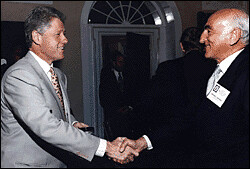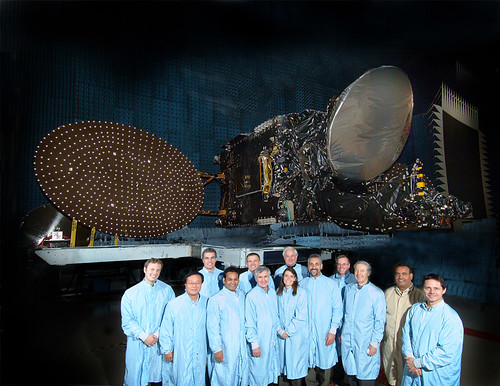Chinese Interference
If you’ve been in the satcom business for a while, you remember Loral’s problems with selling satellite technology to China about 10 years ago. The story made the front page of the New York Times 10 years ago:
The documents paint a fascinating portrait of the intense struggles surrounding Mr. Clinton last February as he weighed whether to allow the satellite launching and ignore the pleas of prosecutors and the probable outrage from some in Congress.
A top State Department official had warned White House staff members that the satellite company, Loral Space and Communications, engaged in ”unlawful” and ”criminal” activity by providing valuable help to the Chinese rocket program.
And the chairman of the company, Bernard L. Schwartz, combed a White House dinner on Feb. 5, looking for Samuel R. Berger, the national security adviser, to plead for a decision on the satellite launching, a decision worth tens of millions of dollars to the company.
As it all played out, with the company arguing it needed an immediate decision, the senior White House staff were concluding that the President’s broader strategy of engaging China should not be endangered by blocking the launching.

The impact of that scandal was far-reaching and still affects how satellite technology is exported — or not. The spacecraft in question, Chinasat 8, was never delivered. What ever became of it? Space Systems/Loral sold it to Bermuda-based ProtoStar, modified it and just shipped it to Kourou for launch next month:
"Space Systems/Loral has been able to deliver a satellite customized to our requirements in a timely and professional manner," said Philip Father, chief executive officer of ProtoStar. "We have worked closely with SS/L throughout this project and are very impressed with the passion and commitment of all the engineers and technicians who have been involved."
The satellite, which was designed to meet the needs of both emerging and existing direct-to-home (DTH) operators in the Asian market as well as other broadband communication needs in the region, was completed for ProtoStar less than 17 months after the contract was signed. It is the first in a fleet of multiple satellites ProtoStar plans to launch that will enable its in-country partners to offer advanced satellite television services and powerful two-way broadband Internet access.
"ProtoStar I is the third satellite that SS/L has shipped for launch this year," said John Celli, president and chief operating officer of Space Systems/Loral. "It is rewarding to see the tangible evidence of our ability to deliver within commercial schedule constraints and to help our customers meet business plan requirements."Space Systems/Loral was able to deliver the satellite in just over a year because the project involved modifications to an existing satellite, which ProtoStar purchased from its previous owner. SS/L then tailored the spacecraft to meet the defined power and footprint/coverage requirements of ProtoStar’s customers.

Now we read of the Protostar-1 satellite is not fully coordinated in Asia, causing quite a bit of friction, via Satellite Finance (subscription):
Confusion has broken out in the Asian satellite industry as Protostar-1 nears its launch at the end of June. Other Asian operators have expressed fears that Protostar-1 has not been properly configured to avoid interfering with the signals of other satellites close to its orbital slot at 98.5° East.
Speaking to SatelliteFinance, Peter Jackson, CEO of AsiaSat, said: "The Ku band is an issue, but it’s the C-Band on the Protostar satellite that’s going to be the real problem, it is going to interfere with a number of satellites. I know that the Chinese national operator has a problem because they are only a half a degree away with Chinasat 22, and Thuraya has a problem because they have a satellite right at 98.5°. New Skies will have issues as well."
Protostar is understood to be launching the satellite to the orbital slot belonging to Singapore. The Chinese Radio Regulatory Department has written to the Infocomm Development Authority in Singapore to express its concerns.
Jackson said that AsiaSat has had contact with Protostar over the issue, but that they have not been able to come to any definitive understanding on the matter. "When AsiaSat 4 launched we had to make changes to accommodate Thaicom, it’s just the way it works," he said. "I’d be very surprised if Singapore allows them launch as it stands. I know that if it were Hong Kong that was in the same position it would definitely not allow it."
Protostar could not be reached for comment on the issue. Protostar-1 is an SS/L built satellite with 16 Ku band transponders and 36 C-Band transponders, and its primary purpose is to provide capacity for DTH platforms in Asia.
This should be interesting. The co-passenger for next month’s launch is expected to be BADR-6 for Arabsat.